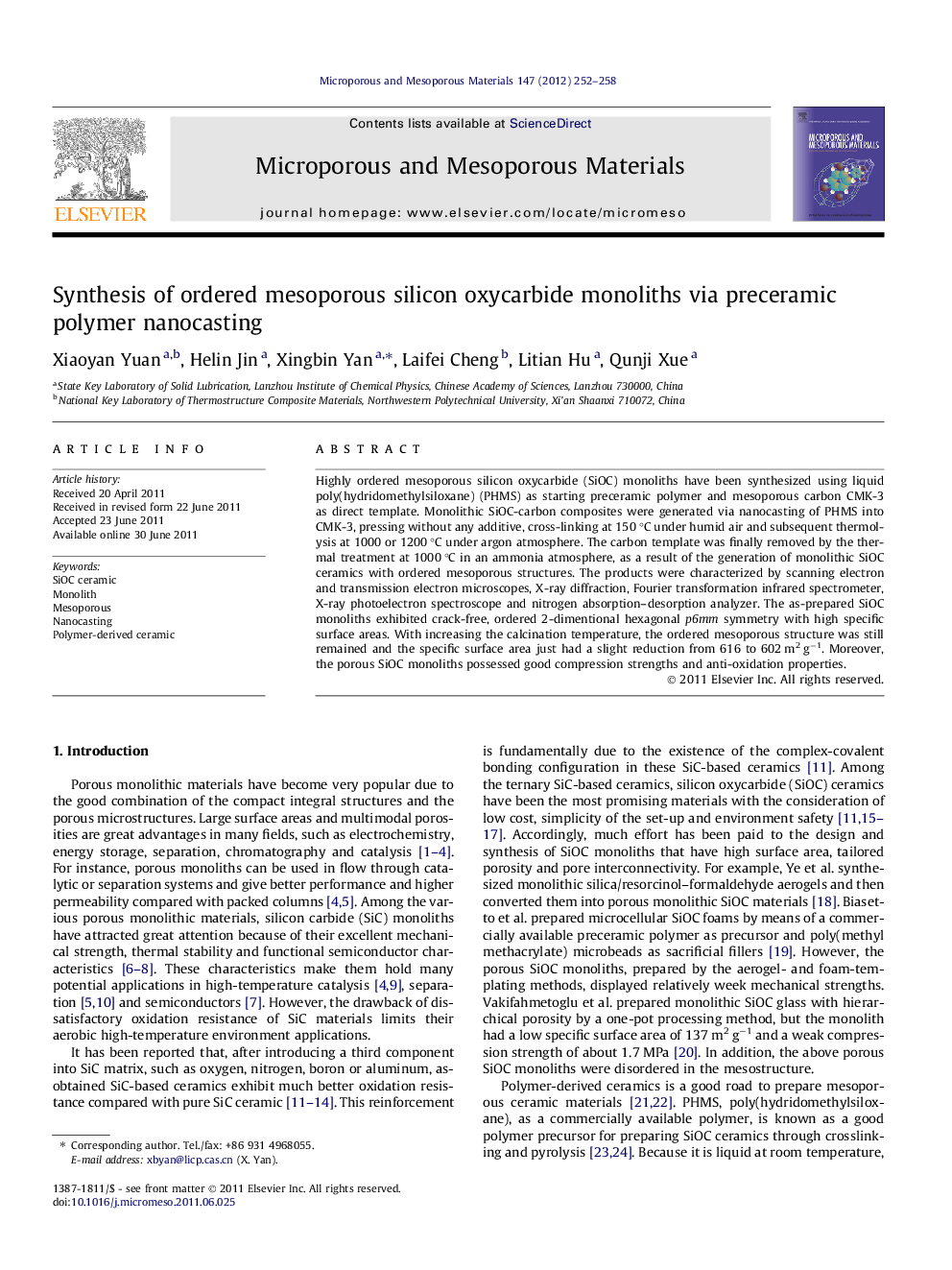| Article ID | Journal | Published Year | Pages | File Type |
|---|---|---|---|---|
| 74595 | Microporous and Mesoporous Materials | 2012 | 7 Pages |
Highly ordered mesoporous silicon oxycarbide (SiOC) monoliths have been synthesized using liquid poly(hydridomethylsiloxane) (PHMS) as starting preceramic polymer and mesoporous carbon CMK-3 as direct template. Monolithic SiOC-carbon composites were generated via nanocasting of PHMS into CMK-3, pressing without any additive, cross-linking at 150 °C under humid air and subsequent thermolysis at 1000 or 1200 °C under argon atmosphere. The carbon template was finally removed by the thermal treatment at 1000 °C in an ammonia atmosphere, as a result of the generation of monolithic SiOC ceramics with ordered mesoporous structures. The products were characterized by scanning electron and transmission electron microscopes, X-ray diffraction, Fourier transformation infrared spectrometer, X-ray photoelectron spectroscope and nitrogen absorption–desorption analyzer. The as-prepared SiOC monoliths exhibited crack-free, ordered 2-dimentional hexagonal p6mm symmetry with high specific surface areas. With increasing the calcination temperature, the ordered mesoporous structure was still remained and the specific surface area just had a slight reduction from 616 to 602 m2 g−1. Moreover, the porous SiOC monoliths possessed good compression strengths and anti-oxidation properties.
Graphical abstractCrack-free, high mechanical strength, ordered mesoporous silicon oxycarbide (SiOC) monoliths have been synthesized using poly(hydridomethylsiloxane) as starting preceramic polymer and mesoporous carbon CMK-3 as hard template, via nanocasting, pressing, crosslinking and subsequent pyrolysis under different atmospheres..Figure optionsDownload full-size imageDownload as PowerPoint slideHighlights► This is the first attempt to synthesize ordered mesoporous SiOC monoliths. ► The monoliths exhibited crack-free, well ordered hexagonal p6mm symmetry. ► The SiOC monoliths showed high specific surface areas above 600 m2 g−1. ► The products possessed good mechanical strengths and high oxidation resistance.
